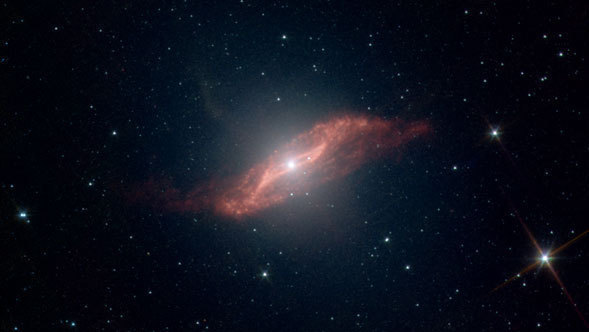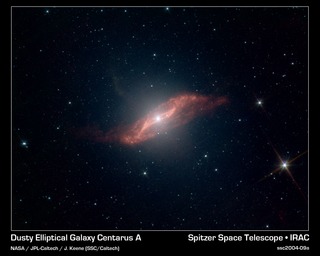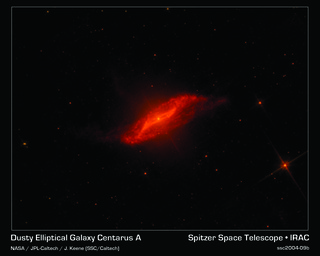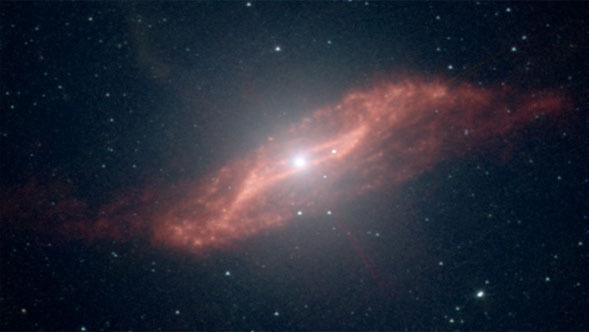The Making of a Galactic Parallelogram
Science Animations Video • June 1st, 2004 • ssc2004-09v1
In this animation, the elliptical galaxy Centaurus A is seen through the eyes of three different telescopes. Initially, the movie zooms into a visible light picture showing how this galaxy is bisected by an unusual lane of dust, somewhat irregular in appearance.
The view fades to reveal the false-colored, near-infrared view of this galaxy as seen by the Two Micron All Sky Survey (2MASS). In these longer wavelengths of light, much of the dust has become transparent, allowing us to see more of the stars in the core of the galaxy. The nature of the densest dust is still difficult to determine because it can only be seen where it blocks the light of more distant stars.
The Spitzer view is revealed next, showing the dramatic mid-infrared light view of the galaxy. At these longer wavelengths, the dust clouds now glow red, allowing us to see the structure of the dust throughout the galaxy more clearly than ever before. It is clear that the dust is not random or irregular, but lies in a geometrically symmetric distribution, marked by a particularly striking parallelogram in the inner reaches.
What could cause such an oddly geometric shape in a galaxy? The Spitzer image of this galaxy is replaced by a simulated model that answers this question. If the dust actually resided in a warped disc, seen nearly edge-on, the projected distribution of dust would adopt this type of regular structure. Such a structure is the "smoking gun" of galactic cannibalism, indicating that a spiral galaxy has fallen into and is in the process of merging with an elliptical galaxy.
Video Credit: NASA/JPL-Caltech and A. Quillen (University of Rochester)







